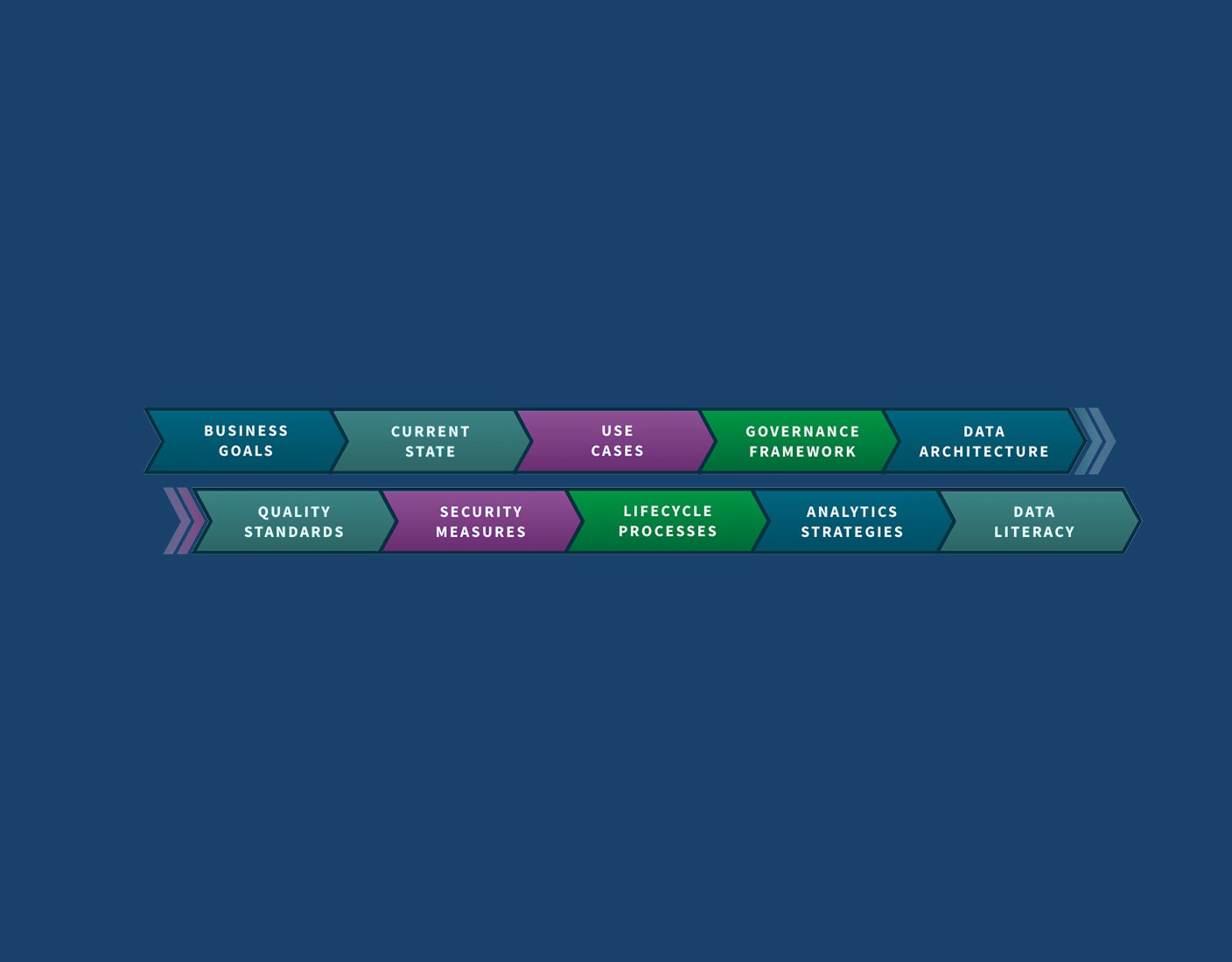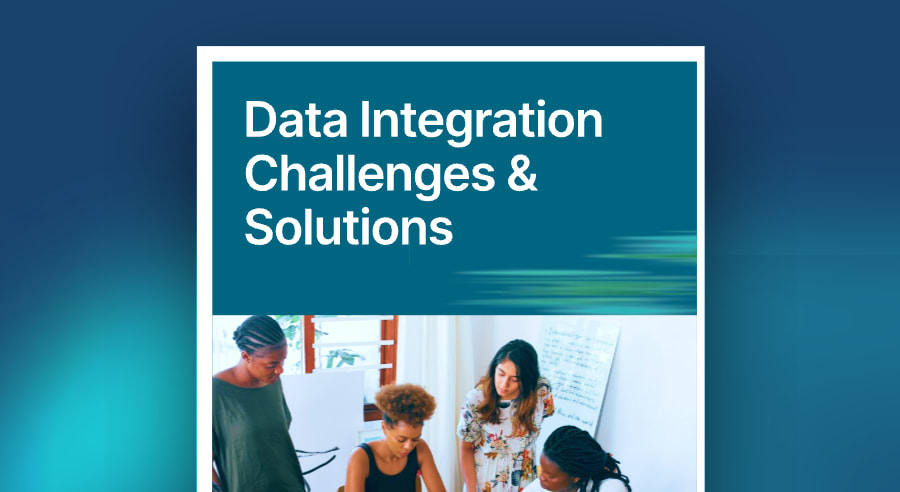Data Strategy Framework in 10 Steps
Planning before implementing is crucial in your enterprise data strategy journey. You need a well-thought-out data strategy framework tailored to your organization's unique needs. Key components in developing your data strategy roadmap involve defining a data governance framework, designing scalable data architectures, setting quality standards, and outlining strategies for leveraging data in analytics and reporting.

1. Align to Business Goals. Align your enterprise data strategy goals with your overall business goals.
Collaborate with key stakeholders to define the business strategy and specific business processes and areas where data can play a strategic role in achieving overall business objectives.
2. Assess Current State. Conduct a comprehensive assessment of your existing data assets, processes, and capabilities.
Conduct a thorough inventory and profiling of existing data sets for each business unit, detailing sources and assessing quality.
Map end-to-end data processes to evaluate efficiency and identify key touchpoints.
Assess the technology infrastructure supporting data storage, processing, and integration for gaps and opportunities.
Audit data governance methodologies, ensuring alignment with roles, responsibilities, and compliance.
3. Identify Use Cases. Involve key stakeholders from various departments to gather insights and requirements. Key questions to ask include:
What are the key business objectives of your department?
What types of data are critical for your daily operations and decision-making?
How is data currently managed and utilized in your department?
What data-related challenges or concerns do you currently face?
4. Develop Data Governance Framework: Set the stage for a smoother implementation of robust data governance measures during the subsequent Implement phase.
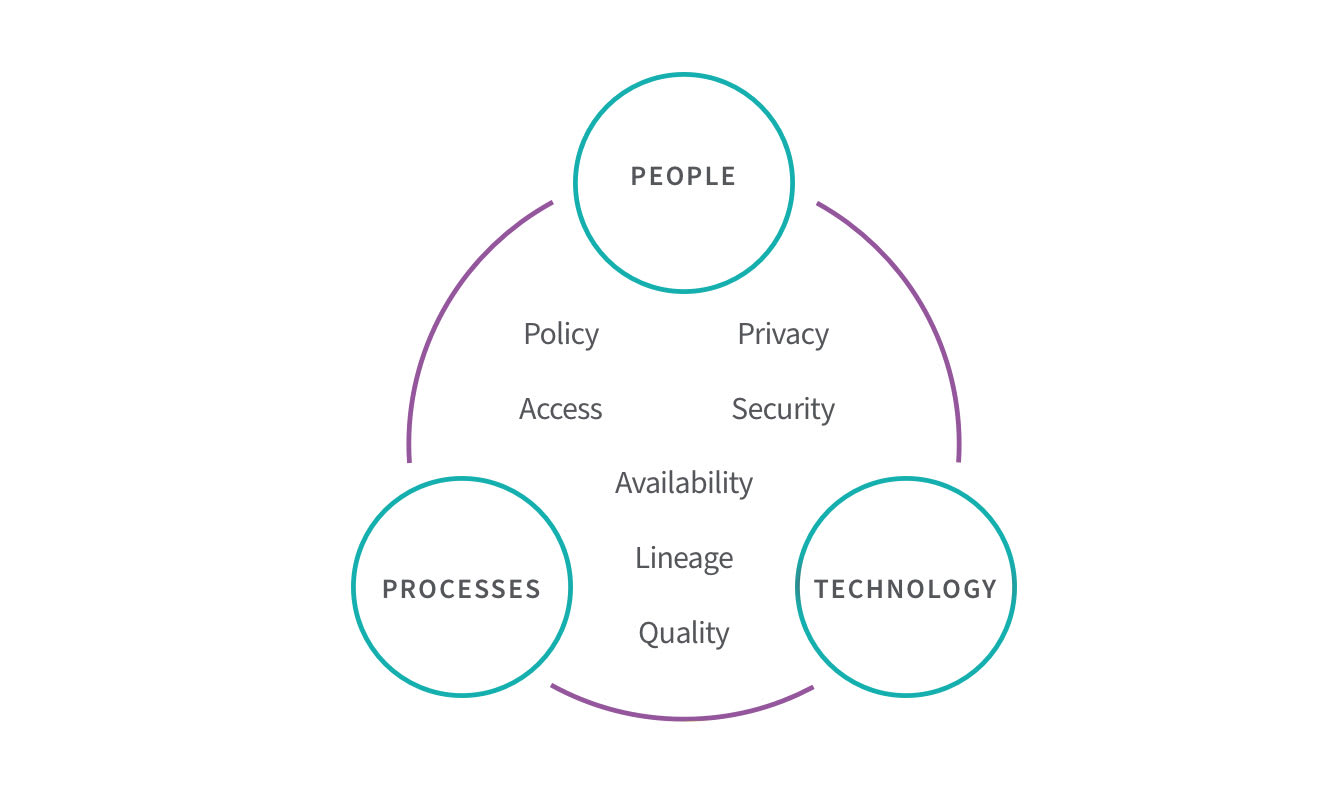
Define the foundational elements of the framework, including roles, responsibilities, and high-level policies.
Outline the key principles and objectives that will guide the implementation of these measures in the subsequent phases.
Engage with stakeholders to ensure their input is considered in shaping the framework.
5. Define Data Architecture. Your data engineers should design a scalable and flexible data architecture that aligns with your business needs.
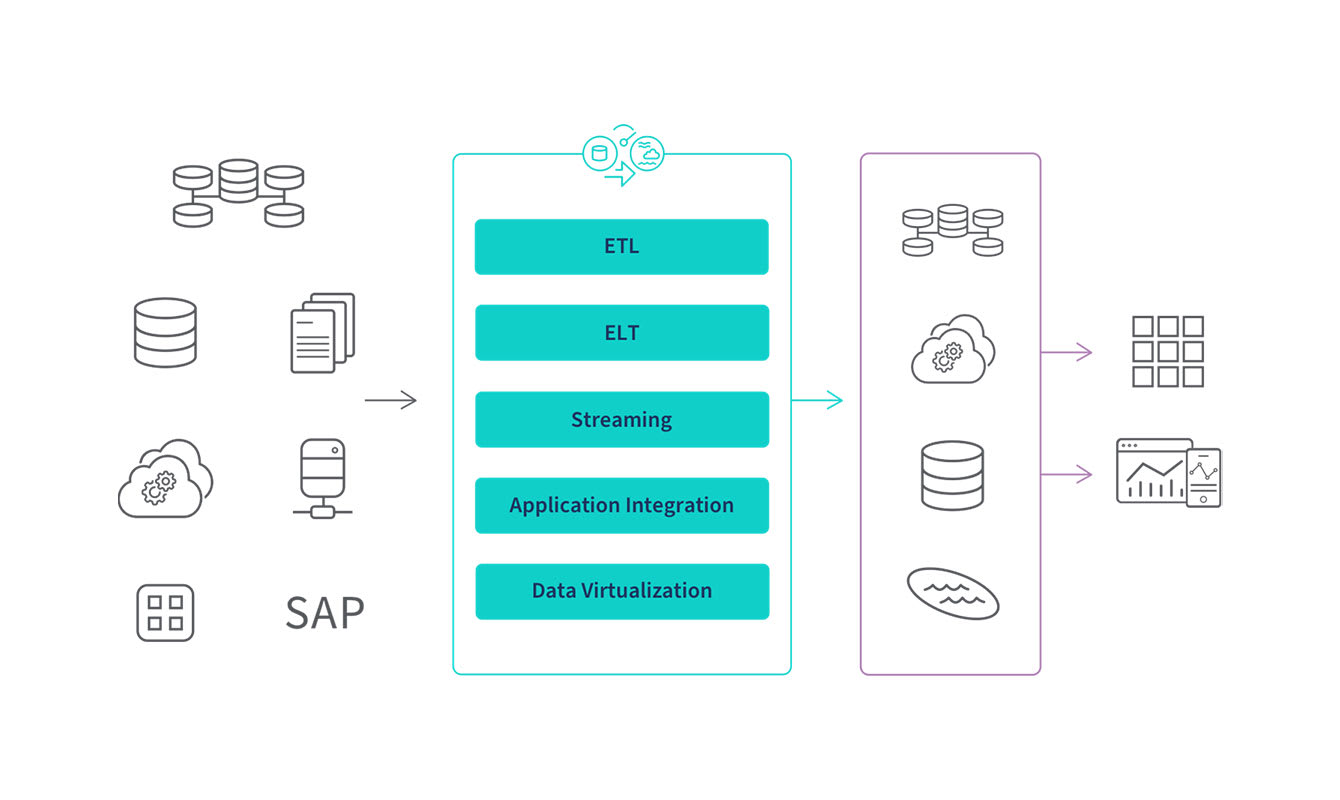
Identify and document business requirements to shape the data architecture.
Make sure your framework is scalable and adaptable to future growth in your company’s data and technological advancements.
Develop a data model and integration strategies for seamless data flow across systems.
Ensure alignment with the current technology stack for compatibility and integration with existing IT infrastructure (or identify upgrades).
6. Set Data Quality Standards. Define a data quality process, standards, and metrics to ensure accuracy and consistency.
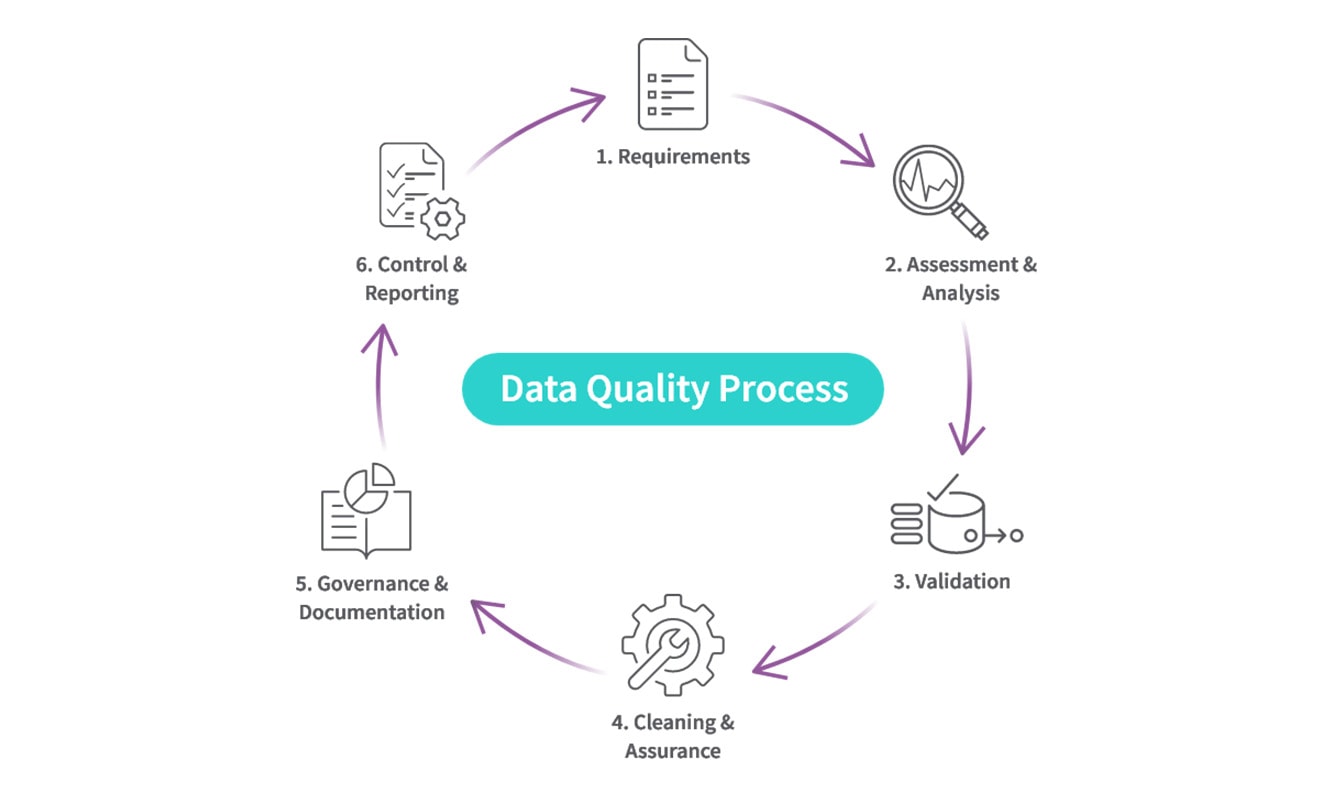
Involve key stakeholders in determining acceptable thresholds and expectations.
Define metrics for accuracy, completeness, and consistency.
7. Design Security Measures. Identify security and privacy requirements, and establish measures to protect sensitive data.
Identify potential security vulnerabilities and threats through a comprehensive risk assessment.
Define access control and authentication strategies to ensure secure data handling.
Establish a framework for data privacy policies and procedures, aligning with relevant regulations.
Plan for regular security audits and assessments to proactively identify and address potential weaknesses in the security framework.
8. Define Data Lifecycle Processes. Define end-to-end data lifecycle processes, including collection, storage, processing, and disposal.
Map out comprehensive data lifecycle processes, detailing the data sources and stages such as data profiling, transformation and integration, migration between systems, retention and archiving, backup and recovery, access controls, governance oversight, and ongoing monitoring for data quality.
Identify key stakeholders and their roles at each stage of the data lifecycle to ensure accountability.
Define protocols for data integrity, access controls, and compliance measures throughout the entire data lifecycle.
Establish guidelines for ethical and regulatory considerations related to data collection, retention, and disposal practices.
9. Outline Analytics and BI Strategies. Develop strategies for leveraging enterprise data for analytics, reporting, and business intelligence.
Identify business areas and objectives that can benefit from analytics and BI initiatives.
Define specific metrics and key performance indicators (KPIs) to measure the success of these efforts.
Select an analytics/BI tool based on user needs and preferences.
10. Design Data Literacy Initiatives Plan and design educational programs and cultural initiatives that will later be implemented to promote a data-aware environment within your organization.
Identify the target audiences and their specific needs for data education and awareness.
Develop communication strategies to promote a data-aware culture, emphasizing the importance of data in decision-making.
Keep in mind that AI and modern data integration tools can automate various aspects of your data strategy, including data profiling, cleansing, and integration. Through machine learning algorithms, these technologies streamline processes, enhance data quality, and accelerate decision-making, allowing your organization to extract greater value from your data assets with increased efficiency.











































